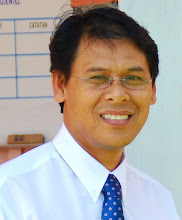
Ventilation and solar-control devices, and low thermal capacity building materials are part of the building heritage. House construction is highly systematized, like a modern prefabrication system, but with a much higher degree of flexibility and variation. The house components are made on the ground and later assembled on the building site. A very sophisticated addition system, which allows the house to grow with the needs of the user, is an advantage for the poor because it allow them to invest and build gradually rather than shouldering one huge initial financial burden.
The traditional Malaysian housing process is highly autonomous, largely controlled by the user. Guided by building tradition and the village carpenter, the owner-builder designs a house that is uniquely suited to the family's socioeconomic and cultural situation. Not only does the traditional approach foster a better match of house to user, it keeps the cost down by eliminating the need for professional intermediaries such as architects or developers.
Self-help and cooperative labour are the resources upon which the owner-builder relies. The traditional Malaysian house has an open interior, promoting good cross ventilation and lighting and allowing the space to be used for many purposes depending on the season, occasion, or time of day.
Since most activities take place on the floor, the need for furniture is minimal; bedding materials and sleeping mats are rolled up and stored during the day to eliminate the need for separate living and sleeping quarters. Interior spaces are defined, not by partitions or walls, but rather by changes in floor level; they may be respected or ignored, allowing the house to accommodate larger numbers of people than usual during, for example, feasts.
Thus the traditional Malaysian house exhibits greater versatility and more efficient use of space than does the modern house, where spaces are limited to the specific use determined by furniture and partitions. The traditional Malaysian house has, over the years, evolved a very efficient addition system that grows according to the needs of its users. The core unit, or the ibu rumah, is the basic living unit for the small or poor family. The kitchen and toilet are often located on the exterior. From the ibu rumah, many additions can be made as the family grows bigger or as it acquires the means to build a bigger house.
Sumber artikel : www.malaysiasite.nl
Sumber gambar : http://effablogue.blogspot.com/






































2 comments:
Hello~ Can i ask the location for the photos?? Is it located around Selangor??
hi ying...you can search using image source i've given there...on the last line...
Post a Comment